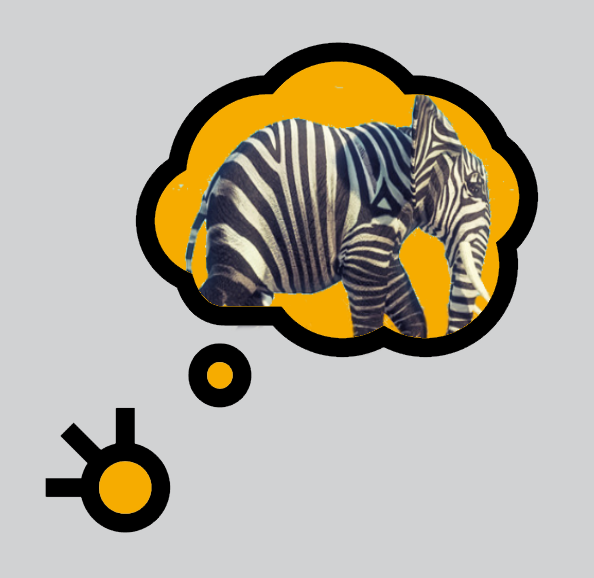
Assumptions, guesses, jumping to conclusions…
…interpreting, making up stories, filling in the gaps, anticipating…
We can’t get through a day without these.
Picture yourself walking through a busy pedestrian area. You notice other people’s direction of travel and you make assumptions about which way they will continue to walk. In response, you adjust your own direction of travel so you don’t run into anyone. Crowds of people manage to make this work all the time. If we didn’t have the power of assumption and interpretation, people would be crashing into each other much more often.
This facility is normal and quite useful. Without our ability to fill in the gaps, make connections and anticipate what’s going to happen, we would be confused and exhausted just by trying to figure out what to do.
We should appreciate our vast abilities with this skill.
But filling in the gaps is not always useful
The problem is that guessing and assuming can get out of control.
Imagine being in your office, a close colleague looks at you and then quickly looks away. You conclude he is avoiding you which you find irritating. Your next interaction with him is based on that interpretation; the relationship becomes awkward. But in fact, he was coming to greet you and was then distracted by his phone buzzing in his pocket which he knew was an important call coming in, likely to be delivering bad news; he was upset and stressed.
~~~~
In another setting, you and other team members are sitting in a conference room and the team leader walks in the room, clearly very angry. Everyone braces for her to accuse the team of some failure. Uncertainty, anticipation, and tensions rise. That meeting does not go well as everyone waits for the bad news to arrive. Later the team leader tells you that she had just found out that her partner was going to leave her for someone else and she was not handling it well and didn’t want everyone to know.
Assuming is automatic
If we become more aware of our automatic ability to assume, guess, and fill in the gaps, we can start to use this more consciously. We will still interpret the team leader’s behaviour as anger or the colleague as turning away from us but if we know that the brain is making up a story, we can hold back on actually believing the story our brain tries to feed us. We can go find out what is really happening before we fall in the trap of “knowing”.
The brain likes to be certain
Another brain function that we need to be aware of in that case, is the transition from feeling that we know something to believing it 100% and acting on that belief. The brain would rather be certain than correct (so it is prone to believing lies, gossip, and conspiracies). This makes us gullible and vulnerable.
Tap into curiosity
So what should you do instead?
Inquire with others about what is true or not; ask, don’t assume.
- Pause and be deeply curious: ask yourself, ‘How do I know this to be true?’ If the answer is not based on real evidence, then it is quite likely a fabrication.
- Take time to recognise the stories you have made up and see them as the stories that they are, then you can go find out what is really true by asking others: was your friend angry with you or was something else going on?
- Check out the stories you hear from others and check those for validity as well.
Be particularly suspicious about things that you feel strongly about. Sometimes the brain, with its need for certainty, gets very attached to a particular story; it may feel true, but that does not make it true.
For more brain-based learning for leaders in your organisation, consider providing them with an in-depth transformational leadership experience. Rewired to Lead is comprehensive and scalable; it provides all the people skills that new managers need if they are to manage other people effectively.
Rewired to Lead

The programme takes leaders on a journey of personal development, where they will learn to fully utilise their best human capabilities as they step into fully committed leadership.
more info